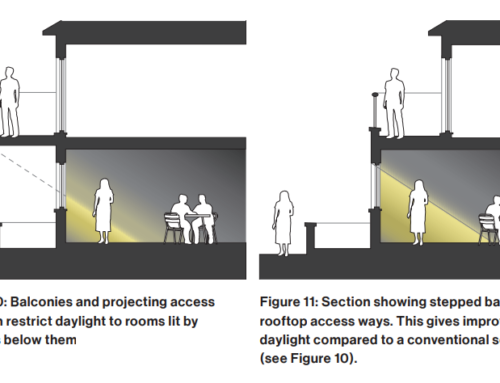Grasping Right to Light: Key Facts to Be Aware Of

In the world of land construction, grasping the subtleties of right to light is crucial for both parties, including builders and property owners. A light rights assessment is a critical instrument that measures how much natural light enters a property and whether proposed projects will encroach on these entitlements. As urban spaces continue to develop and grow, the implications of light rights have become increasingly important, influencing zoning permissions and building strategies.
Dealing with the intricacies of right to light matters can be overwhelming, especially for those not acquainted with the laws governing them. By learning about the historical and juridical basis for right to light in the UK, as well as when and how to conduct a right to light survey, stakeholders can avoid expensive arguments and ensure their projects are aligned with current regulations. This piece aims to demystify the system and emphasize the significance of right to light surveys in upholding a peaceful balance between development and the entitlements of adjacent lands.

Comprehending Right to Light
The Right to Light is a statutory right that permits a property owner to receive a particular quantity of natural light through their windows. This right is not absolute but can be claimed through historical use and can significantly affect property development and neighboring relations. Grasping this right is crucial for both developers and homeowners, as it can impact how buildings are designed.
In the UK, Right to Light is typically recognized under common law and has changed through various legal cases. The right can be asserted if a property has enjoyed clear light for a consistent period of 20 years, which can lead to potential legal challenges in urban areas where space is limited. Knowing the jurisprudential framework surrounding this right is crucial for anyone involved in property development to avoid controversies and ensure adherence with planning regulations.
Developers must be proactive in addressing Right to Light during the initial phases of planning and design. Failing to sufficiently address this issue can lead to expensive outcomes, including legal actions that may halt or alter development projects. By comprehending the consequences and how to properly assess light rights, developers can create blueprints that respect neighbors' rights while still enhancing the capabilities of their own properties.
Regulatory and Legal Compliance Concerns
Grasping the legal and regulatory aspects of light rights is crucial for real estate developers. The Right to Light is mainly derived from case law and is acknowledged in statute law in the UK. Property owners may claim a entitlement to light if they have enjoyed light through defined apertures for a certain period, typically 20 years. This right can lead to complications, especially when developments are planned that could violate on existing rights. Right To Light Aldgate with local laws and case precedents is essential, as local differences may influence how rights are interpreted and applied.
Neglect to address right to light issues during the planning process can lead to costly conflicts and setbacks. Developers often underestimate the importance of conducting comprehensive right to light assessments early in their plans. By doing so, they can minimize risks associated with legal challenges from neighbors or the council. Legal experts can help in understanding the consequences of any existing rights, as well as in navigating the planning approval process to prevent future lawsuits.
Moreover, the possibility for legal remedies in cases of infringement is a significant compliance issue. If a right to light is violated, property owners have the option to request court orders to prevent construction or changes that would block their light. Additionally, compensation may be sought for lost rights, making it essential for developers to understand how their actions could affect neighboring properties. Consulting with right to light specialists not only supports compliance but also promotes positive relationships with the local community, ultimately fostering smoother projects.
Survey Procedure and Case Studies
The method of conducting a Right to Light survey begins with an first assessment of the property and its surrounding region. This typically entails collecting details about current structures, their altitudes, and proximities from neighboring properties. Subsequently, surveyors utilize tailored tools and software to analyze sunlight access and any potential effects on neighboring properties. This analysis usually entails creating detailed daylight and sunlight reports that detail how much natural light is accessible and whether any proposed developments could infringe upon a neighbor's right to light.
In a notable case pertaining to urban development, a developer intended to build a high-rise building in a highly populated area. A Right to Light survey uncovered substantial potential obstructions to light for neighboring buildings, prompting the developer to modify their plans. By partnering with surveyors and legal experts, they were able to adjusting the design to reduce the effect on light access while still realizing their project goals, demonstrating the importance of thorough assessments in the initial phases of the planning process.
Another case showcased the challenges encountered by developers when addressing Right to Light issues related to heritage buildings. When a modern extension was put forward adjacent to a heritage site, neighbors raised concerns over light infringement. The carrying out of a detailed Right to Light survey proved essential in this scenario, as it helped to reconcile the light rights of the current historic structure with the need for new development. Through strategic adjustments to the design, the developer was able to gaining approval while honoring the established rights, showcasing the critical role of Right to Light assessments in navigating challenging planning landscapes.
